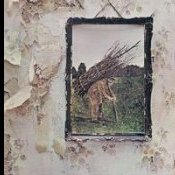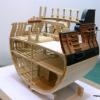
Bob Cleek
-
Posts
3,374 -
Joined
-
Last visited
Reputation Activity
-
 Bob Cleek reacted to Roger Pellett in How do I cut 0.3mm copper sheet for hull plating tiles?
Bob Cleek reacted to Roger Pellett in How do I cut 0.3mm copper sheet for hull plating tiles?
KUnfortunately, Eswee doesn’t tell us more about what he is trying to do. If he plans to SHEATH the underwater area of a wooden ship the comments above are relevant. On the other hand, if he is PLATING the hull of a steel hulled vessel it’s another matter. 1/2in plating is about right for the shell plating of smaller merchant ships.
A number of years ago, I bought a quality Guillotine type paper cutter. I use it all the time. It will cut .005in copper with minimal distortion.
I just plated the hull of my Benjamin Noble model with paper glued down with PVA Glue. (Post above in scratch built models). If I were to simulate copper sheathing on a wooden hull I would use paper too. I stabilized my paper plates with shellac before gluing.
Roger
-
 Bob Cleek got a reaction from mtaylor in How do I cut 0.3mm copper sheet for hull plating tiles?
Bob Cleek got a reaction from mtaylor in How do I cut 0.3mm copper sheet for hull plating tiles?
You'd go crazy laying "wood tiles" to mimic copper sheathing. It would be far easier to paste paper tiles and then saturate them in shellac. (Layers of muslin cloth soaked in shellac were laminated into sheets to make insulated circuit board material in the days before plastics. Shellac lasts forever and is very thin, so it won't obscure details.) Then paint and weather that surface. another approach that would work well would be to plank up the hull in the ordinary way and then give the bottom a light coating of gesso and sand that fair. Then scribe the fine lines in the gesso depicting the plating joints with a flexible straight edge and fine knife blade or scribe point (But don't overdo it. It's just the suggestion of a line that you want.) Then paint and weather.
-
 Bob Cleek got a reaction from EricWilliamMarshall in How do I cut 0.3mm copper sheet for hull plating tiles?
Bob Cleek got a reaction from EricWilliamMarshall in How do I cut 0.3mm copper sheet for hull plating tiles?
The paper does indeed have to be to scale, of course. IMHO, the problem arises because folks can't let go of trying to use "real" copper on their models and trying to portray their scale copper sheathing as shiny as a new penny. Real coppered bottoms look a lot more like old copper pennies, not new ones. New copper sheet will be "new penny shiny" straight from the mill, but within weeks, if not days, in the salt air, will be developing a patina, first bright green (verdigris) and later moving to "copper brown." Once the hull hits the water, all bets are off, since the hull will rather quickly foul with marine growth. A verdigris patina will develop at the waterline where air and water mix, while below the waterline it will become copper brown covered with "bottom crud" to one degree or another.
Save for the time when it's actually applied, brand new shiny copper sheathing just isn't seen in real life. Folks who are impressed with "real copper plating" are drinking kit manufacturers' Kool Aid. It's just marketing hype.
-
 Bob Cleek got a reaction from EricWilliamMarshall in How do I cut 0.3mm copper sheet for hull plating tiles?
Bob Cleek got a reaction from EricWilliamMarshall in How do I cut 0.3mm copper sheet for hull plating tiles?
First off, the "ponce wheel effect" produces convex "dimples," while the picture shows concave dimples. Big difference.
Second, the workmen in the picture are doing a really lousy job of it. (The hardhats are a dead giveaway. They're probably government subcontractors who belong to the roofers' union, not the caulkers' union, which I don't think exists anymore, although there once was one. See footnote below.) They are driving the tacks with carpenter's hammers, which leave large dimples and creases in the copper surface. A ship's bottom should be as smooth as possible to reduce friction resistance in the water. Copper sheathing is properly fastened with a "coppering hammer," which has a convex-shaped striking face with a rounded edge that permits the tack head to be driven flush with the surface of the copper sheet while minimizing dimpling and preventing creasing the sheet itself.
A newly coppered yacht hull properly done.
A copper plate on USS Constitution photographed during restoration:
Note the absence of "rivets (sic)" on a well-portrayed copper bottom on a fine model of Cutty Sark:
Footnote:
Caulking in the United States became a trade widely practiced by free African Americans in the mid-nineteenth century. Many caulking crews were itinerant workers who would travel from shipyard to ship yard to caulk hulls on contract as their skills were required. Racial discrimination in the workplace resulted African American caulkers buying their own shipyard, the Chesapeake Marin Railway and Dry Docking Company in 1866. This was quickly followed by the formation of the Colored Caulkers' Trade Union in 1868, one of the first African American trade unions to be created and the precursor to the Colored National Labor Union. When the founding president of the Colored Caulkers' Trade Union became the president of the Colored National Labor Union, he was followed as president of the Colored Caulkers' Trade Union by Frederick Douglass. Famed as a leader of the American abolitionist movement, few today realize that Frederick Douglass was a ship's caulker by trade and trade unionist, as well. See: https://aflcio.org/2021/2/11/pathway-progress-baltimore-caulkers-take-charge-their-own-future and https://en.wikipedia.org/wiki/Isaac_Myers
-
 Bob Cleek got a reaction from ERS Rich in How do I cut 0.3mm copper sheet for hull plating tiles?
Bob Cleek got a reaction from ERS Rich in How do I cut 0.3mm copper sheet for hull plating tiles?
Yes and no. Been there, done that, got the tee shirt. Such a paper cutter will cut uniform widths of copper sheet, but the shearing cut will cause the strip to curl. The copper strip then has to be straightened by putting one end of the strip in a vise and pulling hard on it from the other end with a pair of vice grips attached until the strip straightens out.
That said, I've seen very, very few models with coppered bottoms which did not significantly detract from the model's appearance.
-
 Bob Cleek got a reaction from Snug Harbor Johnny in How do I cut 0.3mm copper sheet for hull plating tiles?
Bob Cleek got a reaction from Snug Harbor Johnny in How do I cut 0.3mm copper sheet for hull plating tiles?
First off, the "ponce wheel effect" produces convex "dimples," while the picture shows concave dimples. Big difference.
Second, the workmen in the picture are doing a really lousy job of it. (The hardhats are a dead giveaway. They're probably government subcontractors who belong to the roofers' union, not the caulkers' union, which I don't think exists anymore, although there once was one. See footnote below.) They are driving the tacks with carpenter's hammers, which leave large dimples and creases in the copper surface. A ship's bottom should be as smooth as possible to reduce friction resistance in the water. Copper sheathing is properly fastened with a "coppering hammer," which has a convex-shaped striking face with a rounded edge that permits the tack head to be driven flush with the surface of the copper sheet while minimizing dimpling and preventing creasing the sheet itself.
A newly coppered yacht hull properly done.
A copper plate on USS Constitution photographed during restoration:
Note the absence of "rivets (sic)" on a well-portrayed copper bottom on a fine model of Cutty Sark:
Footnote:
Caulking in the United States became a trade widely practiced by free African Americans in the mid-nineteenth century. Many caulking crews were itinerant workers who would travel from shipyard to ship yard to caulk hulls on contract as their skills were required. Racial discrimination in the workplace resulted African American caulkers buying their own shipyard, the Chesapeake Marin Railway and Dry Docking Company in 1866. This was quickly followed by the formation of the Colored Caulkers' Trade Union in 1868, one of the first African American trade unions to be created and the precursor to the Colored National Labor Union. When the founding president of the Colored Caulkers' Trade Union became the president of the Colored National Labor Union, he was followed as president of the Colored Caulkers' Trade Union by Frederick Douglass. Famed as a leader of the American abolitionist movement, few today realize that Frederick Douglass was a ship's caulker by trade and trade unionist, as well. See: https://aflcio.org/2021/2/11/pathway-progress-baltimore-caulkers-take-charge-their-own-future and https://en.wikipedia.org/wiki/Isaac_Myers
-
 Bob Cleek got a reaction from allanyed in How do I cut 0.3mm copper sheet for hull plating tiles?
Bob Cleek got a reaction from allanyed in How do I cut 0.3mm copper sheet for hull plating tiles?
The paper does indeed have to be to scale, of course. IMHO, the problem arises because folks can't let go of trying to use "real" copper on their models and trying to portray their scale copper sheathing as shiny as a new penny. Real coppered bottoms look a lot more like old copper pennies, not new ones. New copper sheet will be "new penny shiny" straight from the mill, but within weeks, if not days, in the salt air, will be developing a patina, first bright green (verdigris) and later moving to "copper brown." Once the hull hits the water, all bets are off, since the hull will rather quickly foul with marine growth. A verdigris patina will develop at the waterline where air and water mix, while below the waterline it will become copper brown covered with "bottom crud" to one degree or another.
Save for the time when it's actually applied, brand new shiny copper sheathing just isn't seen in real life. Folks who are impressed with "real copper plating" are drinking kit manufacturers' Kool Aid. It's just marketing hype.
-
 Bob Cleek got a reaction from mtaylor in How do I cut 0.3mm copper sheet for hull plating tiles?
Bob Cleek got a reaction from mtaylor in How do I cut 0.3mm copper sheet for hull plating tiles?
Not hardly. I've seen enough copper-sheathed bottoms in real life to know what they really look like.
-
 Bob Cleek got a reaction from mtaylor in How do I cut 0.3mm copper sheet for hull plating tiles?
Bob Cleek got a reaction from mtaylor in How do I cut 0.3mm copper sheet for hull plating tiles?
First off, the "ponce wheel effect" produces convex "dimples," while the picture shows concave dimples. Big difference.
Second, the workmen in the picture are doing a really lousy job of it. (The hardhats are a dead giveaway. They're probably government subcontractors who belong to the roofers' union, not the caulkers' union, which I don't think exists anymore, although there once was one. See footnote below.) They are driving the tacks with carpenter's hammers, which leave large dimples and creases in the copper surface. A ship's bottom should be as smooth as possible to reduce friction resistance in the water. Copper sheathing is properly fastened with a "coppering hammer," which has a convex-shaped striking face with a rounded edge that permits the tack head to be driven flush with the surface of the copper sheet while minimizing dimpling and preventing creasing the sheet itself.
A newly coppered yacht hull properly done.
A copper plate on USS Constitution photographed during restoration:
Note the absence of "rivets (sic)" on a well-portrayed copper bottom on a fine model of Cutty Sark:
Footnote:
Caulking in the United States became a trade widely practiced by free African Americans in the mid-nineteenth century. Many caulking crews were itinerant workers who would travel from shipyard to ship yard to caulk hulls on contract as their skills were required. Racial discrimination in the workplace resulted African American caulkers buying their own shipyard, the Chesapeake Marin Railway and Dry Docking Company in 1866. This was quickly followed by the formation of the Colored Caulkers' Trade Union in 1868, one of the first African American trade unions to be created and the precursor to the Colored National Labor Union. When the founding president of the Colored Caulkers' Trade Union became the president of the Colored National Labor Union, he was followed as president of the Colored Caulkers' Trade Union by Frederick Douglass. Famed as a leader of the American abolitionist movement, few today realize that Frederick Douglass was a ship's caulker by trade and trade unionist, as well. See: https://aflcio.org/2021/2/11/pathway-progress-baltimore-caulkers-take-charge-their-own-future and https://en.wikipedia.org/wiki/Isaac_Myers
-
 Bob Cleek reacted to druxey in How do I cut 0.3mm copper sheet for hull plating tiles?
Bob Cleek reacted to druxey in How do I cut 0.3mm copper sheet for hull plating tiles?
This question made me smile. For my first 'coppered' model when i was about 16, I used 5 thou copper. As the model scale was 1:96, the coppering looked like cedar shingles!
As mentioned by others, just because the actual ship used copper doesn't mean you have to use copper on a model. Very thin paper attached using a glue without water content and painted will look much better. Unless very large scale, forget the nailing pattern. Experiment on scrap before committing to the actual model.
To answer the original question, one way to cut thin copper is with a straight edge and sharp blade. Use a hard surface such as a piece of plate glass to cut on. Score the metal and work the piece back and forth along the score using parallel pliers until it comes free.
-
 Bob Cleek got a reaction from Justin P. in How do I cut 0.3mm copper sheet for hull plating tiles?
Bob Cleek got a reaction from Justin P. in How do I cut 0.3mm copper sheet for hull plating tiles?
No need to think any longer. I'll confirm that fact. Thin (proper scale thickness) archival bond paper glued on in "plates" of the correct size, following which the plates are shellacked to stabilize them and render the scales impervious to moisture, and then painted and weathered appropriately will do the best job of portraying a coppered bottom. The standard office/classroom paper cutter is just the ticket for getting out the plates.
-
 Bob Cleek got a reaction from Gregory in How do I cut 0.3mm copper sheet for hull plating tiles?
Bob Cleek got a reaction from Gregory in How do I cut 0.3mm copper sheet for hull plating tiles?
No need to think any longer. I'll confirm that fact. Thin (proper scale thickness) archival bond paper glued on in "plates" of the correct size, following which the plates are shellacked to stabilize them and render the scales impervious to moisture, and then painted and weathered appropriately will do the best job of portraying a coppered bottom. The standard office/classroom paper cutter is just the ticket for getting out the plates.
-
 Bob Cleek got a reaction from bruce d in How do I cut 0.3mm copper sheet for hull plating tiles?
Bob Cleek got a reaction from bruce d in How do I cut 0.3mm copper sheet for hull plating tiles?
No need to think any longer. I'll confirm that fact. Thin (proper scale thickness) archival bond paper glued on in "plates" of the correct size, following which the plates are shellacked to stabilize them and render the scales impervious to moisture, and then painted and weathered appropriately will do the best job of portraying a coppered bottom. The standard office/classroom paper cutter is just the ticket for getting out the plates.
-
 Bob Cleek got a reaction from mtaylor in How do I cut 0.3mm copper sheet for hull plating tiles?
Bob Cleek got a reaction from mtaylor in How do I cut 0.3mm copper sheet for hull plating tiles?
No need to think any longer. I'll confirm that fact. Thin (proper scale thickness) archival bond paper glued on in "plates" of the correct size, following which the plates are shellacked to stabilize them and render the scales impervious to moisture, and then painted and weathered appropriately will do the best job of portraying a coppered bottom. The standard office/classroom paper cutter is just the ticket for getting out the plates.
-
 Bob Cleek got a reaction from mtaylor in How do I cut 0.3mm copper sheet for hull plating tiles?
Bob Cleek got a reaction from mtaylor in How do I cut 0.3mm copper sheet for hull plating tiles?
Yes and no. Been there, done that, got the tee shirt. Such a paper cutter will cut uniform widths of copper sheet, but the shearing cut will cause the strip to curl. The copper strip then has to be straightened by putting one end of the strip in a vise and pulling hard on it from the other end with a pair of vice grips attached until the strip straightens out.
That said, I've seen very, very few models with coppered bottoms which did not significantly detract from the model's appearance.
-
 Bob Cleek got a reaction from Jaager in How do I cut 0.3mm copper sheet for hull plating tiles?
Bob Cleek got a reaction from Jaager in How do I cut 0.3mm copper sheet for hull plating tiles?
No need to think any longer. I'll confirm that fact. Thin (proper scale thickness) archival bond paper glued on in "plates" of the correct size, following which the plates are shellacked to stabilize them and render the scales impervious to moisture, and then painted and weathered appropriately will do the best job of portraying a coppered bottom. The standard office/classroom paper cutter is just the ticket for getting out the plates.
-
 Bob Cleek reacted to Jaager in How do I cut 0.3mm copper sheet for hull plating tiles?
Bob Cleek reacted to Jaager in How do I cut 0.3mm copper sheet for hull plating tiles?
The copper plates were not riveted. The copper nails were hammered near flush. They were all but invisible at a distance corresponding to a model viewing distance.
There were way more of them than a ponce wheel produces. Model versions of copper sheathing with a raised or embossed addition mostly tends to give a hull a bad case of small pox.
I am still thinking that 100% rag bond paper, paint with real copper, using PVA to attach may be an effective alternative, in which case, a guillotine type paper cutter would be a real help. It may even work to slice individual plates from a strip. The paper could be painted while still at the 8.5 x 11 stage.
-
 Bob Cleek got a reaction from Estoy_Listo in Using ink to simulate tarring in deck planking.
Bob Cleek got a reaction from Estoy_Listo in Using ink to simulate tarring in deck planking.
Yes, a very light stain rubbed across the plank seams will end up in the seams and show darker. If you want light colored decks, seal the decks with a clear sealer, then apply the stain and rub it all off the sealed deck, leaving the stain in the deck seams. When it comes to deck seams, the thinner they are, the better. At scale viewing distance, there isn't much to them.
-
 Bob Cleek reacted to Roger Pellett in Justifying the purchase of a mill
Bob Cleek reacted to Roger Pellett in Justifying the purchase of a mill
Machine tools are expensive and IMHO trying to justify a purchase by determining what ship model parts you can use them for misses a good bit of the point. The question not being asked is “What jigs, fixtures, and tools can I make with machine tools that will improve the quality of my models?”
With my lathe and milling column I have made: a propeller soldering fixture, a fixture for holding small blades in my sharpening jig, a jig for soldering ladders, a height gage, a fixture for aligning a drill for hawse pipe holes, and just recently a beam compass (photo below.). My lathe headstock and tail stock are also my go to tools for accurately starting taps and dies.
Whenever I run into a ship modeling problem that requires a tricky setup I consider if I can build a jig or fixture to solve it.
Roger
-
 Bob Cleek reacted to grsjax in Justifying the purchase of a mill
Bob Cleek reacted to grsjax in Justifying the purchase of a mill
If you have a lathe you can use it to mill parts. A milling attachment for a lathe is a lot cheaper than a mill and can do most of the milling necessary on a model. Here is a link to one for a Taig lathe sold by Little Machine Shop https://littlemachineshop.com/products/product_view.php?ProductID=1956 There are milling attachments for most lathes on the market so you shouldn't have a problem finding one to fit yours.
-
 Bob Cleek got a reaction from Ryland Craze in Hello from Sunny Florida
Bob Cleek got a reaction from Ryland Craze in Hello from Sunny Florida
You are to be commended on your wise decision to start with models that will give you an opportunity to develop basic skills first. A small, simple model well done is always to be preferred over a huge, complex model that's never finished!
-
 Bob Cleek got a reaction from JeffT in Hello from Sunny Florida
Bob Cleek got a reaction from JeffT in Hello from Sunny Florida
You are to be commended on your wise decision to start with models that will give you an opportunity to develop basic skills first. A small, simple model well done is always to be preferred over a huge, complex model that's never finished!
-
 Bob Cleek got a reaction from mtaylor in Split Rings.
Bob Cleek got a reaction from mtaylor in Split Rings.
Does counting the number of different sized rings and the number of different types of rings on the plans offer any clues? If you have the same number of (probably smaller) rings as you have gun tackle attachments, you'll know which ones to use on the gun tackles. Otherwise, I'd just give a call to Model Shipways and ask them. Somebody there can probably answer your question.
-
 Bob Cleek got a reaction from DPhilbrick in Hello from Sunny Florida
Bob Cleek got a reaction from DPhilbrick in Hello from Sunny Florida
You are to be commended on your wise decision to start with models that will give you an opportunity to develop basic skills first. A small, simple model well done is always to be preferred over a huge, complex model that's never finished!
-
 Bob Cleek got a reaction from Maury S in Hello from Sunny Florida
Bob Cleek got a reaction from Maury S in Hello from Sunny Florida
You are to be commended on your wise decision to start with models that will give you an opportunity to develop basic skills first. A small, simple model well done is always to be preferred over a huge, complex model that's never finished!


.thumb.jpeg.fc5d633a7b34428fcf19419a73d56d55.jpeg)








